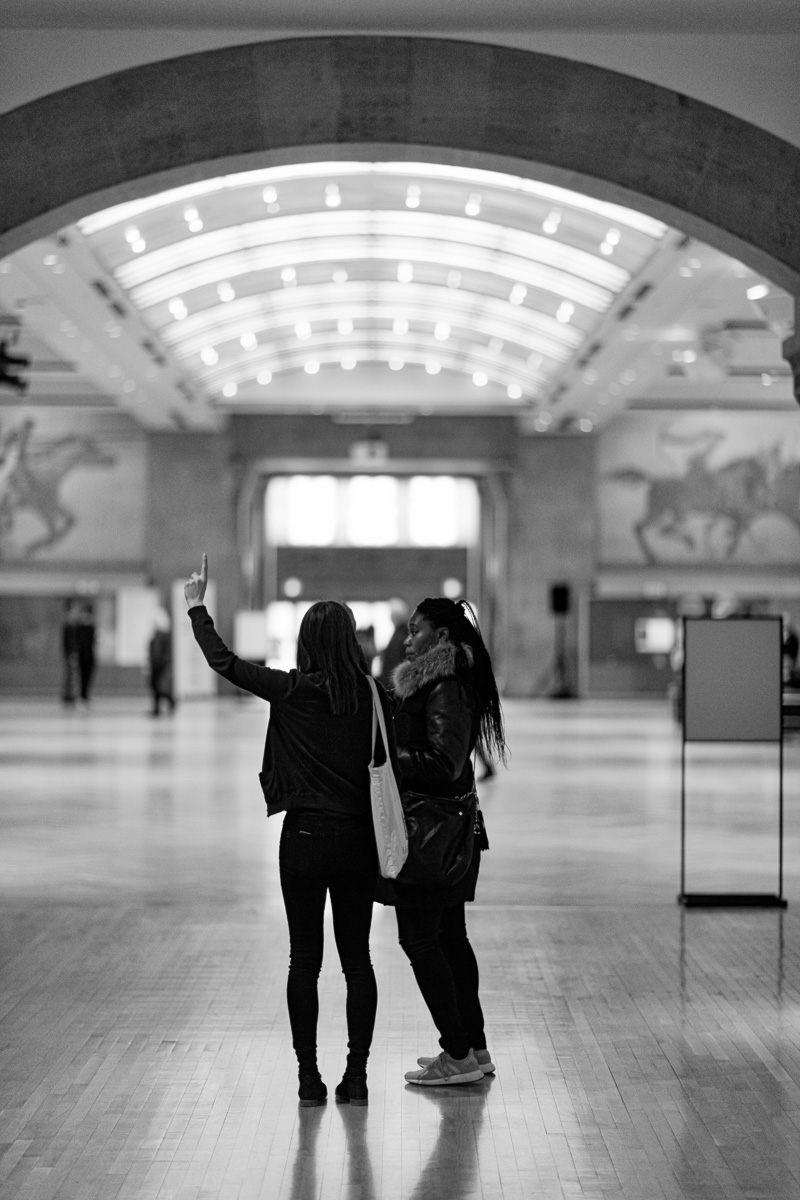Typically, once a year, when the weather is hateful, when I can’t muster the will to shoot while standing on a street corner in the rain, I go to the museum instead. I tell myself that what I’m doing is shifting my photographic habits indoors. Street photography inside a big building. Capturing people in the act of being people. But when I get there, I discover that what I think I’m doing and what I find myself in fact doing are two different things. Yes, I find myself watching people in the act of being people inside a big building. But this isn’t any big building. This is a museum. This is a repository for our oldest memories. I find myself watching people in the act of brushing up against their collective memories.
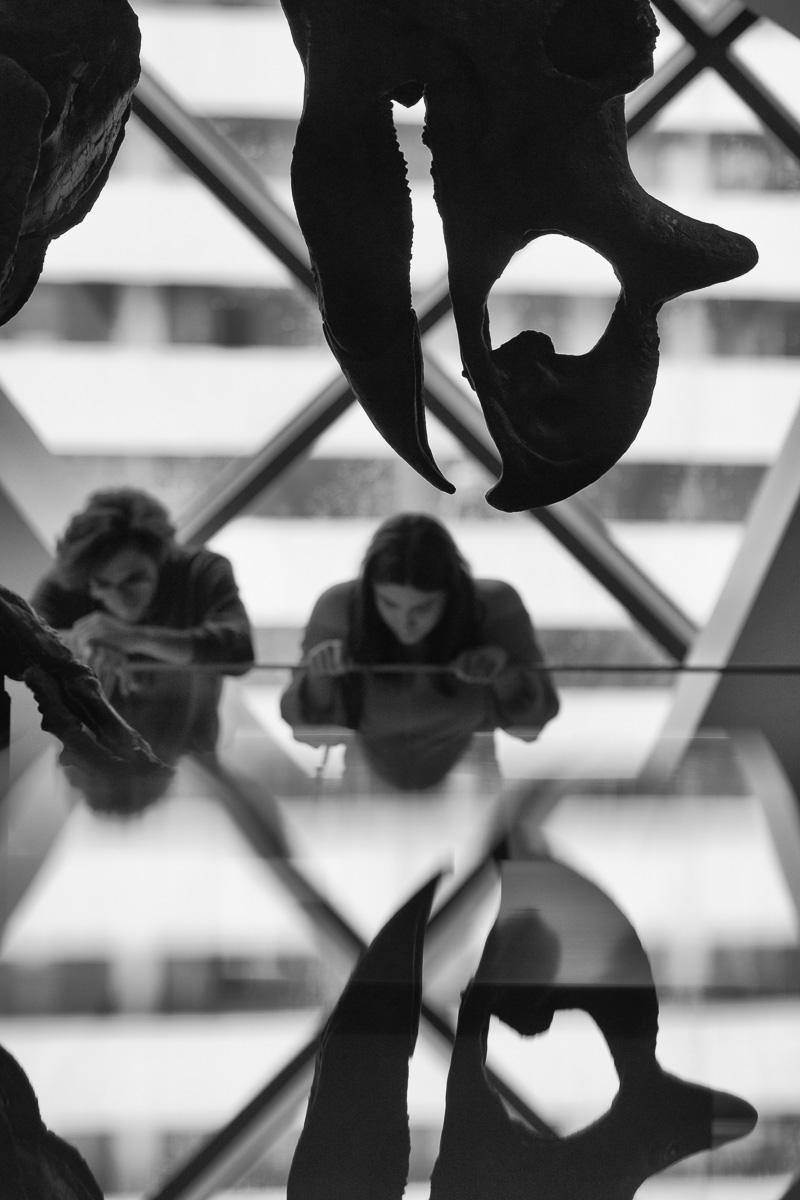
I can’t remember the first time I came to this museum—this Royal Ontario Museum. I was born in Toronto, and it seems to me that this museum is part of my psychic bedrock, mixed in with my earliest memories. I remember sitting on the family room floor while my mom played the piano. I remember a Hallowe’en night watching from the front window as all the other kids collected candy while I sat in my skeleton costume and tried not to scratch my chicken pox. And I remember the first time I saw a dead person, the mummy (Antjau) in this museum. I remember the horrified fascination I felt as young child staring at the teeth and empty eye sockets, and realizing that these remains had once been a living person, like me.
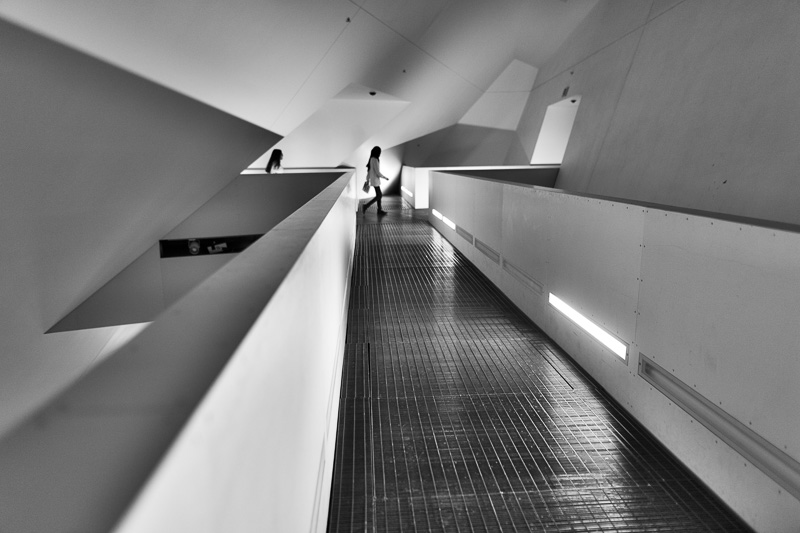
There are many ways in which the museum is the collision of time past and time present, death and life, stillness and motion. Fossils, mummified remains, taxidermied animals, sit in glass cases and testify to times so remote they scarcely seem real. We gaze into the glass and simultaneously see reflections of ourselves. Grandparents pause to catch their breath while the young grandchildren race ahead to see the next exhibit. The building itself—a mashup of architectural styles—embodies this collision. Century-old Romanesque Revival gets swallowed up or overwritten (or enhanced?) by Daniel Libeskind’s Crystal.
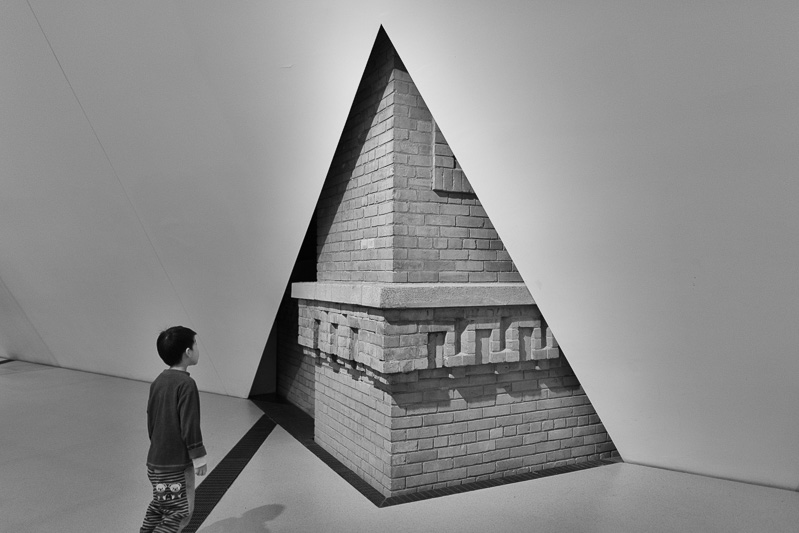
Carrying a camera to a museum, I feel a kinship to the curators who develop the exhibits. How do we classify a vase or a bust or a coin? By geography? Historical period? Influences? Provenance? Materials? How does it speak to us? What do we discover about ourselves when we examine it? And how do we think ourselves into the future? Something similar happens with my photographs. I don’t shoot the bare exhibit. That’s mere record keeping. Besides, the museum can do a better job of it, with proper lighting and shooting conditions. But what I might be able to do at least as well as the museum staff is observe the way people interact with the exhibits and the enclosed space of the building. When I get home, I have my own curation to perform. How do organize my photographs? By the location of people in galleries? By their age? By whether they’re active or inactive? Distracted or thoughtful? I ask myself how these people make me feel. I wonder what I might discover about myself as I gaze at their images. And I project myself into our collective future.
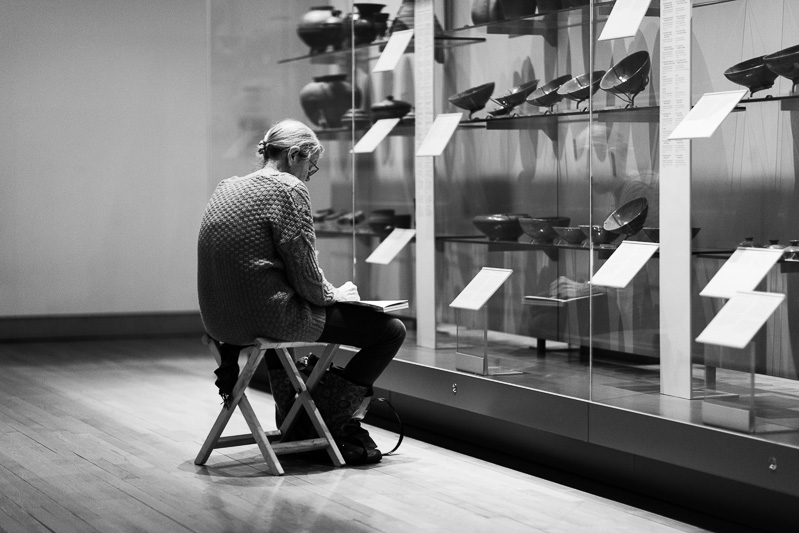
I have a secret theory that the camera was invented by quantum theorists. Niépce and Daguerre and Talbot where really physicists seeking a way to stare into the deepest secrets of the universe. With their early processes—daguerrotypes and calotypes—they discovered that the world presents simultaneously in more than one state. In their images, we see that the world is both living and dead, both in motion and at rest. It turns out that things we thought were dichotomies belong to the same structure. Though we would like to, we cannot capture photographs and present them to the future as a record of our faded world. That future has already come and gone. Its traces are already in the photographs we present to it.
